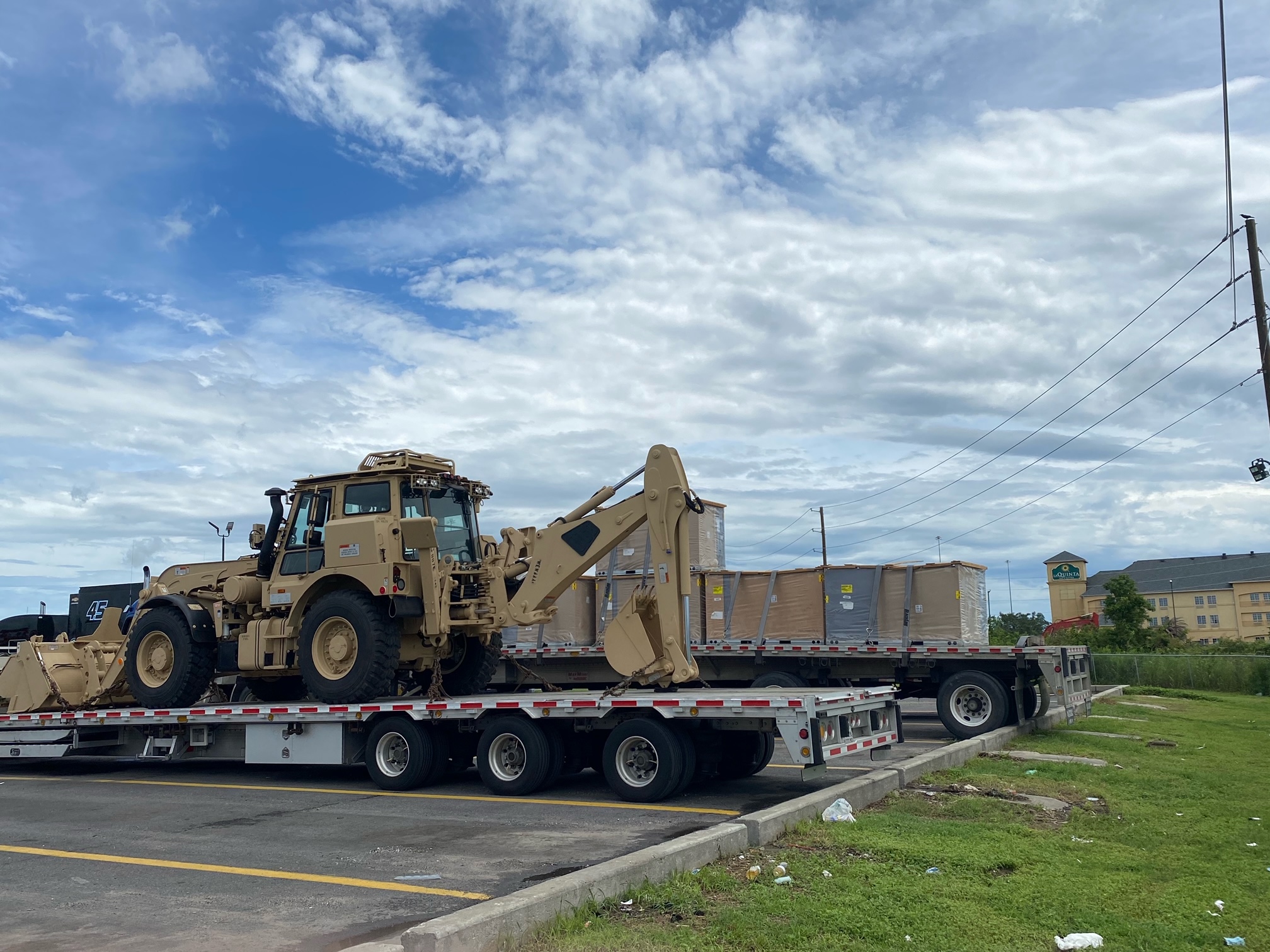.jpeg.aspx?lang=en-US&width=500&height=375)
In a previous blog titled In the Dark, where I was chronicling my experiences as a company driver, I ended up going down a rabbit hole that was off-topic regarding flatbed trailers and aerodynamics. As promised here is my blog on the subject of aerodynamics in regards to a flatbed operation.
Years ago I started my career as an independent owner-operator pulling a flatbed trailer. Providing services in the open deck segment of the trucking industry taught me many things in regards to load securement and fuel economy. In this segment, I would like to concentrate on the aerodynamics involved in pulling a flatbed trailer. Many people say that aerodynamics do not matter when you are pulling a flatbed trailer. I found that aerodynamics most definitely matter while transporting materials on a flatbed trailer.
The interesting part was how many opportunities there were to exploit aerodynamics by how you place the load on a flatbed trailer. My first trailer was a 45-foot Transcraft TL-2000 pulled by my trusty 1996 Freightliner FLD-120 70” mid-roof powered by a Detroit 12.7 400HP/1450 FTP engine to a Rockwell 9 speed overdrive transmission, 3.91 rear axle ratio, and riding on lopro 24.5” tires. I did not want to have a spread axle trailer because in my mind having two axles 10'1” apart would not prove to be a fuel-efficient setup.
Within a year of my start, I purchased a second trailer which was a utility air ride slide axle aluminum steel combo flatbed trailer. Immediately I was able to find greater fuel efficiency pulling the air ride slide axle trailer in comparison to the spread axle trailer. There were numerous reasons for the efficiency gains from the closed tandem air ride slide:
- less drag from side scrub of the tires while going down the highway
- better aerodynamics from having two mudflaps vs. four on the spread axle trailer
- the mudflap mounting allowed for air to pass over the top vs. the frame chassis mounted spread axle mudflaps
- increased ability to load in an aerodynamic fashion
The first 3 items on my list above are easy to understand, so I will concentrate on my fourth point which was being able to load for better aerodynamics. Quite simply I always moved my load as far forward as possible which improved aerodynamics in relationship to how close I can move the load to the back of the cab. The reality is the gap between your truck and the load is no different when pulling a flatbed trailer than it is when pulling a van trailer. The air ride sliding tandem axle assembly under my trailer gave me the ability to move my axles to the minimum 36' bridge law position. This enabled me to put the largest portion of my load right behind the cab of my truck which increased aerodynamics.
In addition, I was typically able to put the largest part of the load behind the cab which decreased aerodynamic drag even more. For example, when I transported a load of 12-foot x 48-inch wallboard, I would put six bundles, three on each side, followed by three more bundles, side by side, followed by two bundles side by side with one bundle centered on the top of the last stack. I would start this load one foot off the leading edge of the trailer and the load tapered down at the back which shaped my load somewhat like a raindrop. In comparison, my competition would start their load six feet from the leading edge of the trailer along with arranging the load in the opposite fashion which is aerodynamically the wrong way to go through the air. I can go into many more examples of how to exploit aerodynamics in a flatbed operation but I think from this first example you should be able to get the basic idea.
What I found was having the tallest part of the load in the front tapering down to the back greatly increased my fuel efficiency. Of course, I know a lot of you are saying you can haul 40,000 lbs on a spread axle and only 34,000 lbs on a closed tandem. And you are absolutely right! That being said, in most states even with a spread axle you are only allowed 80,000 lbs gross vehicle weight which means with a closed tandem you just have to have your load positioned correctly to achieve 34,000 lbs on each of your tandems along with 12,000 lbs on a steer axle.
Due to the nature of having to have the tandem axle of the trailer and truck loaded evenly at a maximum of 34,000 lbs, I devised a system to indicate my axle weights while my trailer was being loaded. The system I used to know whether I was over or under the 34,000 lbs is quite simple. All I did was tap into the airline supplying the airbag of the suspension and tied it into a tank valve which is nothing different than a schrader valve you would find at the end of your valve stem to fill your tire. Next was the purchase of a digital tire gauge which went to the tenth of a pound. At this point, all I needed to do was find out through trial and error what the air pressure was in the truck and trailer suspensions. The scales did not tell me what I weighed. It only tells me whether I was over or under my legal axle weights. If the air pressure indicated that I was close to my maximum legal axle weight I would make sure that I was on relatively level ground. The reality was generally I was either a good bit over or under my axle weight so the precision of the system was seldom needed.
Taking advantage of the fuel efficiency gains made it so that my newer trailer paid for itself vs. the operating cost of my spread axle trailer.